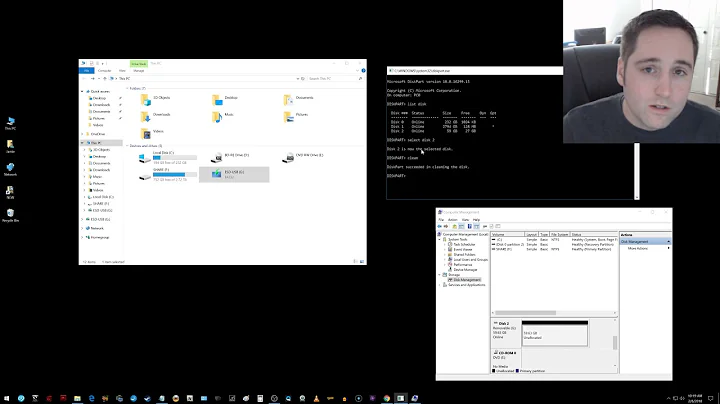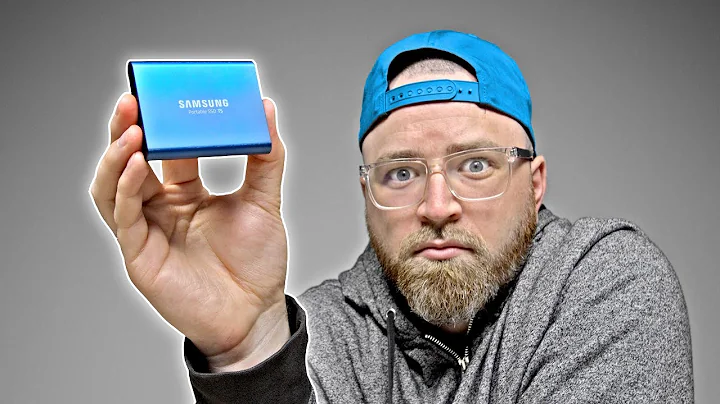How much electricity does an external USB hard drive use when it's not being used?
Solution 1
You could lookup the technical specifications for you specific drive.
External drives that are not host-powered (which have to be wired to a power outlet with an adapter of their own) have at least 4 different power measurements.
- Active -- when disk activity is going on
- Idle -- when disk activity is not going on, but the drive is attached and powered
The drive may or may-not be spinning at this time (that could be two different sub-states). - Standby -- when drive is Idle, Attached but has gone into a standby power & wear saving state.
This is when it takes a little longer to access it again. - Host-shutdown -- this is when the host-PC is shutdown but the drive continues to be powered through its adapter.
This is similar to any other appliance in its 'standby' mode where it is shutdown but the power outlet is still ON.
- Idle -- when disk activity is not going on, but the drive is attached and powered
The tech-specs for these drives will usually show reducing power requirements in ascending order for the above points. And, if the drive does not perform on one of the latter points, it would typically be excluded from the tech-specs (think of that as the fine-print).
As a bottom line, the states of your drive where the disk-platter is not spinning (assuming you are not talking about solid state drives here) will have relatively lower power consumption compared to when it is spinning.
This difference can be usually perceived by keeping your palm on the top of your drive (if its close by). A spin will always show up as a mild vibration.
The Maxtor (Seagate) drive you refer should have a good idle/standby control.
And the power consumption would typically fall significantly once it spins-down.
I hazard it be be around 2w tops after spin-down, but don't go by that :-)
So, it should be fine to leave it wired and powered while your PC is on.
Unless, you keep your PC on most of the time and use the drive very rarely (or do not turn off the drive power when you shutdown your PC) -- in that case, extra efforts towards powering-down the drive when not in use would be worthwhile.
Solution 2
There is no easy way to find out as many are different and depend on both the type of hard drive (RPM, designed for power saving, form factor) and the enclosure itself.
For example, I have had some enclosures that keep a drive powered up 24x7 when they are turned on and others that go in to power saving mode if idle for more than a couple of minutes.
The best thing you can do is either ask the manufacturer (If buying a complete unit) or buy yourself a Kill a Watt type device.

Related videos on Youtube
Phenom
Updated on September 17, 2022Comments
-
Phenom almost 2 years
My external USB hard drive requires its own power source. I noticed that if I don't use it for a while, and then try to access it later, it takes a while to startup, meaning that it was in some kind of sleep mode. How much electricity is it using when it's powered on but not being used?
Should I turn it off when I'm not using it, or can I leave it on all the time, and it won't waste much money in the electricity bill?
The exernal drive is a Maxtor OneTouch 4 750 GB drive.
-
Brendan Long over 14 yearsIt probably depends heavily on which drive you have. You might want to add that to your answer.
-
Brendan Long over 14 yearsEr.. your question I mean.
-
 Ben Voigt over 12 years@joshhunt: A device running continuously costs about $1/Watt/year. And 250W is fairly typical for a computer + monitor under ordinary office workload. Perhaps you meant $30/month?
Ben Voigt over 12 years@joshhunt: A device running continuously costs about $1/Watt/year. And 250W is fairly typical for a computer + monitor under ordinary office workload. Perhaps you meant $30/month? -
Josh Hunt over 12 yearsHmm, In hindsight I'm actually not sure what I ment by that. Maybe a computer on standby? (but then again, that does not really make much sense either)
-
Daniel R Hicks almost 11 yearsI have an external drive that turns itself off when not being used, so the only power drain is likely less than a watt leaking through the USB.
-
-
 nik over 14 yearsAh, when you start using enclosures with standard harddisk drives things are quite different. The enclosures are not usually designed the way a portable-drive (like the OneTouch or FreeAgent) are made. These would not be very power-friendly.
nik over 14 yearsAh, when you start using enclosures with standard harddisk drives things are quite different. The enclosures are not usually designed the way a portable-drive (like the OneTouch or FreeAgent) are made. These would not be very power-friendly. -
William Hilsum over 14 yearsAgreed... I have not seen to many "insert your own drive" caddies that are power friendly.... and +1 to your comment and answer - looks like you covered a lot there!
-
 Ben Voigt over 12 yearsIn addition to the power used by the drive, there's the inefficiency in the transformer (sometimes called "power brick").
Ben Voigt over 12 yearsIn addition to the power used by the drive, there's the inefficiency in the transformer (sometimes called "power brick").
![[Solved] The file or directory is corrupted and unreadable | Hard Drive is not accessible...](https://i.ytimg.com/vi/63XPjAzsnCk/hq720.jpg?sqp=-oaymwEcCNAFEJQDSFXyq4qpAw4IARUAAIhCGAFwAcABBg==&rs=AOn4CLB0Uznmuh5AuPjQsPGfd38VtiJnMw)



